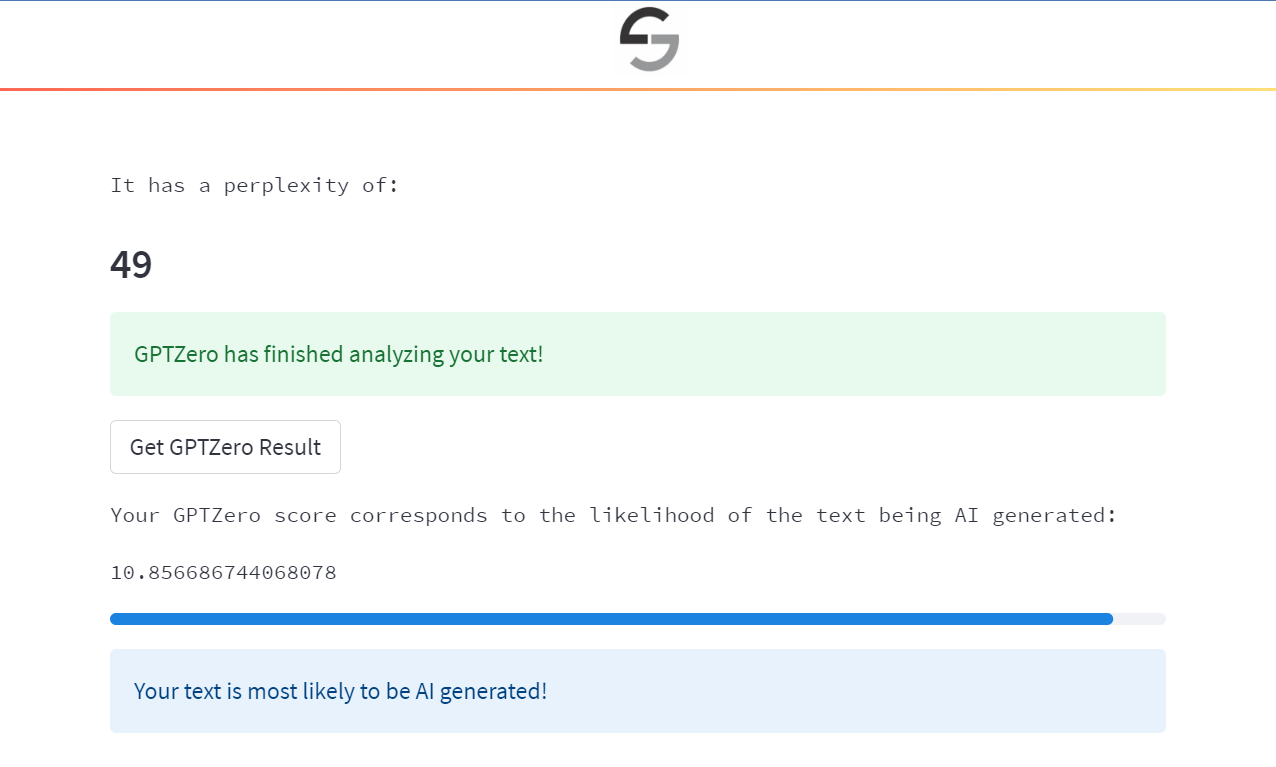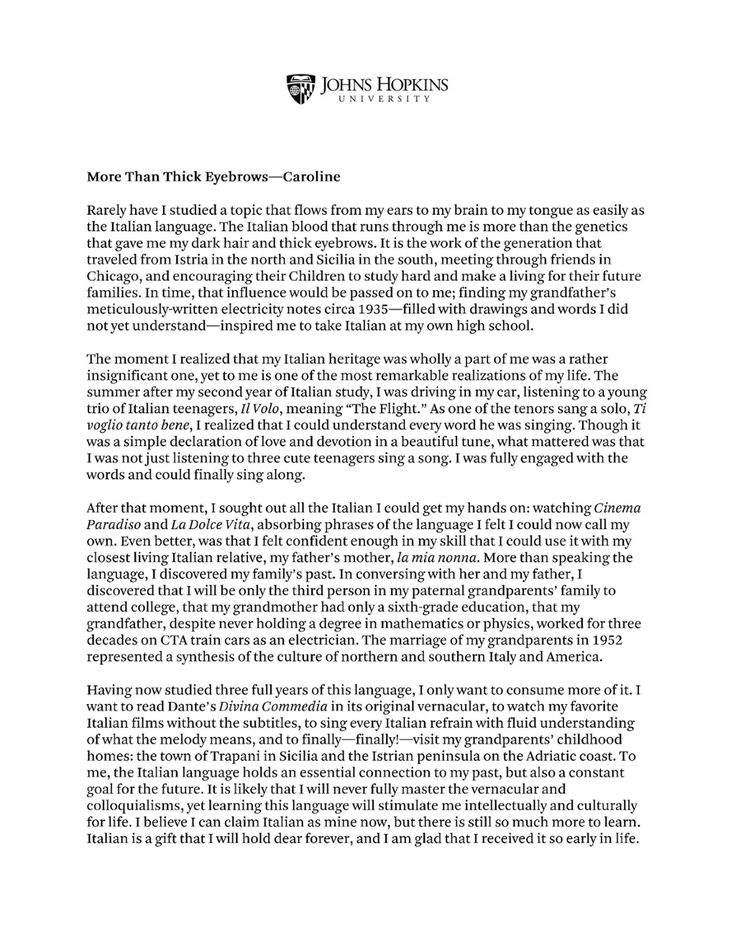Understanding AI Detectors: How They Analyze and Identify Content
Understanding AI Detectors and Their Impact on Content Creation
In today’s digital landscape, the rise of AI-generated text has transformed the way we approach content creation. With the emergence of sophisticated AI writing tools, the ability to distinguish between human and AI-generated content has become increasingly important. This is where AI detectors come into play. In this blog post, I will dive deep into the intricacies of AI detectors, their functionality, and the implications they have for content creation.
What Are AI Detectors?
The Basics of AI Detectors
AI detectors are tools designed to analyze text and determine whether it was created by a human or an artificial intelligence model. These tools use various algorithms and machine learning techniques to evaluate writing patterns, syntax, and structure. By analyzing these elements, AI detectors can flag content that appears to be generated by AI.
For example, an AI detector might identify repetitive phrases or an overly formal tone as indicators of AI-generated text. This capability is essential for educators, publishers, and content creators who want to maintain the integrity of their work.
How Do AI Detectors Work?
The functionality of AI detectors hinges on their underlying technology. Most detectors employ natural language processing (NLP) and machine learning algorithms to assess text. They are trained on vast datasets that include both human-written and AI-generated content, allowing them to recognize subtle differences in writing styles.
One common approach is to use statistical analysis to identify patterns in word usage, sentence length, and complexity. For instance, a detector may find that AI-generated text tends to have a more uniform structure compared to the varied styles found in human writing. As a result, these detectors can provide a percentage likelihood that a piece of text was generated by AI.
Limitations of AI Detectors
While AI detectors are powerful tools, they are not infallible. There are several limitations to consider. Firstly, the accuracy of these detectors can vary significantly based on the specific algorithms used and the training data they were exposed to. In some cases, they may falsely flag human-written text as AI-generated, leading to potential misunderstandings.
Furthermore, as AI writing tools improve, the lines between human and AI writing continue to blur. This evolution poses a challenge for AI detectors, as they must constantly adapt to new writing styles and techniques. It’s crucial to approach AI detection with a critical eye and not rely solely on these tools for validation.

The Role of AI Detectors in Content Analysis
Enhancing Content Quality
AI detectors play a vital role in content analysis by ensuring quality and authenticity. For content creators, maintaining a unique voice and style is essential for engaging their audience. By using AI detectors, I can analyze my work to ensure that it aligns with my writing style and isn’t unintentionally mimicking AI-generated patterns.
Moreover, these tools can help identify areas where my writing may lack depth or creativity. By recognizing sections that appear formulaic, I can revise and enhance my content, ultimately improving its quality and impact.
Ethical Considerations in Content Creation
The use of AI detectors raises ethical questions surrounding data privacy and bias. As I rely on these tools to analyze my content, I must also consider how they handle the data I input. Are they storing my text or using it for further training? Understanding the privacy policies of the tools I use is crucial to protecting my intellectual property.
Additionally, the potential for bias in AI detection algorithms is a concern. If the training data is skewed towards a particular style or demographic, it may lead to incorrect assessments of my writing. It’s essential to choose AI detectors that prioritize fairness and transparency in their algorithms.
Best Practices for Using AI Detectors
To make the most of AI detectors, I follow a few best practices. First, I use these tools as a supplementary resource rather than the sole determinant of my writing’s authenticity. By combining AI detection with my judgment and feedback from peers, I can create high-quality content that resonates with my audience.
Second, I regularly update my knowledge of the latest AI writing tools and detectors. The landscape is constantly evolving, and staying informed allows me to leverage the best technologies available.
Lastly, I remain vigilant about the ethical implications of my content creation process. By being aware of potential biases and privacy concerns, I can ensure that my work is not only authentic but also responsible.

Human vs AI Writing: The Ongoing Debate
The Unique Qualities of Human Writing
One of the most significant discussions in the realm of AI-generated text is the comparison between human and AI writing. Human writers bring a unique perspective, emotional depth, and creativity that machines have yet to replicate fully. My experiences, insights, and cultural context shape my writing in ways that AI cannot mimic.
For example, I often draw from personal anecdotes or societal issues that resonate with my audience. This human element adds richness and relatability to my content, fostering a deeper connection with readers.
The Efficiency of AI Writing Tools
On the other hand, AI writing tools offer unparalleled efficiency. They can generate content quickly and at scale, making them appealing for businesses and individuals with tight deadlines. As someone who often juggles multiple projects, I appreciate the speed and convenience that AI tools provide.
However, the challenge lies in ensuring that the generated content maintains quality and aligns with my voice. Using AI tools as a starting point for inspiration rather than a final product is a strategy I employ to strike the right balance.
Finding Common Ground
Ultimately, the debate between human and AI writing is not about determining a clear winner. Instead, it’s about finding common ground. By using AI-generated text as a supplement to my writing, I can enhance my creativity and productivity while still retaining my unique voice.
As we navigate this evolving landscape, collaboration between human writers and AI tools will likely become more prevalent. This synergy can lead to innovative content creation that leverages the strengths of both.

The Future of AI Detectors and Content Creation
Evolving Technologies
The future of AI detectors is promising, with advancements in machine learning and natural language processing paving the way for more accurate and reliable tools. As these technologies evolve, I anticipate that AI detectors will become better at distinguishing between human and AI-generated text, reducing false flags and improving their overall effectiveness.
Moreover, the integration of AI detectors into content creation platforms could streamline the writing process. Imagine a scenario where I can receive real-time feedback on my writing, helping me refine my style while ensuring authenticity.
Impact on Content Standards
As AI detectors become more sophisticated, I foresee a shift in content standards across various industries. Organizations may adopt stricter guidelines for content authenticity, leading to a greater emphasis on transparency and originality. This evolution could ultimately improve the quality of content available online.
However, this also raises concerns about censorship and the subjective nature of writing. Striking a balance between maintaining content standards and allowing creative expression will be a critical challenge moving forward.
Conclusion: Embracing the Future
In conclusion, AI detectors are reshaping the landscape of content creation. By understanding their functionality, limitations, and ethical considerations, I can leverage these tools to enhance my writing while safeguarding authenticity. The ongoing debate between human and AI writing highlights the importance of collaboration and creativity in the digital age.
As we look to the future, I am excited about the possibilities that lie ahead. By embracing the advancements in AI detection and writing tools, I can continue to create compelling content that resonates with my audience while navigating the complexities of this evolving landscape.

In the end, the journey of content creation is a blend of innovation, ethics, and creativity. Let’s embrace these changes while ensuring that the human touch remains at the heart of our writing.

